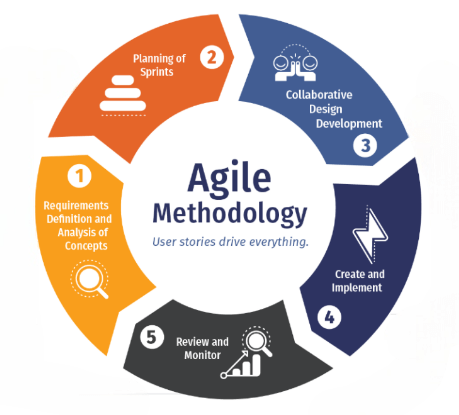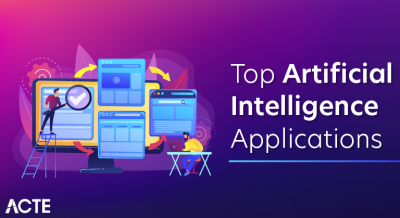
- Introduction to Agile
- The Origins of Agile
- Core Values of Agile
- Key Principles Behind Agile Methodology
- The Agile Frameworks
- Agile vs. Waterfall: A Comparative Overview
- Benefits of Agile
- Conclusion
Introduction to Agile
In recent years, Agile methodology has transformed the landscape of software development and project management. Originally developed within the tech industry, Agile has expanded across various sectors due to its flexibility, adaptability, and emphasis on teamwork and continuous improvement. At its core, Agile is an iterative and incremental approach that breaks down projects into smaller, manageable units called iterations or sprints, allowing teams to deliver value quickly while continuously refining their process based on feedback. Demystifying Agile means understanding that it’s not a rigid set of rules but a mindset centered around collaboration, customer satisfaction, and adaptability to change during Data Science Training. Unlike traditional waterfall models, Agile promotes working software over comprehensive documentation and welcomes changes even late in the development process. This comprehensive guide will explore the principles of the Agile Manifesto, common frameworks such as Scrum and Kanban, and practical applications in both software and non-software environments. We’ll also look at the benefits and challenges of adopting Agile and why it has become a standard approach in today’s dynamic business world. Whether you’re a developer, project manager, or business leader, understanding Agile can help you lead more responsive, collaborative, and successful projects.
Are You Interested in Learning More About Data Science? Sign Up For Our Data Science Course Training Today!
The Origins of Agile
The origins of Agile can be traced back to the early 2000s, as a response to the limitations of traditional project management methods, particularly the Waterfall model. In software development, the Waterfall approach involved a linear process with rigid phases requirements gathering, design, development, testing, and deployment often resulting in lengthy timelines, limited flexibility, and poor adaptability to change. Frustrated by these challenges, a group of 17 software developers gathered in 2001 at a ski resort in Snowbird, Utah, to discuss better ways of working, leading to foundational ideas relevant to understanding What is Data. The outcome of this meeting was the creation of the Agile Manifesto, a foundational document that outlined four core values and twelve guiding principles aimed at improving software development practices. The core values emphasized individuals and interactions over processes and tools, working software over comprehensive documentation, customer collaboration over contract negotiation, and responding to change over following a fixed plan.

These principles laid the groundwork for what would become known as Agile methodology. Over time, Agile evolved into various frameworks such as Scrum, Kanban, and Extreme Programming (XP), each offering unique approaches to managing work. Agile’s adaptability and focus on delivering customer value have since made it a widely adopted strategy beyond software, influencing project management across industries.
Core Values of Agile
- Responding to Change Over Following a Plan Agile is inherently flexible and adaptive. It recognizes that project requirements can change due to new insights or market conditions and encourages responsiveness over strict adherence to a predefined plan.
- Individuals and Interactions Over Processes and Tools While processes and tools are essential, Agile focuses on the people involved in the project, much like the human aspect in understanding What Is Data Processing .
- By fostering collaboration, creativity, and team synergy, Agile believes that the right people can overcome any challenge, even in complex projects.
- Working Software Over Comprehensive Documentation Traditional development models, like Waterfall, often rely heavily on documentation, but Agile values working software as the primary measure of progress. Agile teams aim to deliver working software frequently, making documentation secondary.
- Customer Collaboration Over Contract Negotiation Agile encourages active collaboration with customers and stakeholders throughout the project. This ensures that the product evolves to meet the customer’s needs rather than relying on a rigid contract that may be outdated as the project progresses.
- Build projects around motivated individuals. Agile teams focus on empowering team members and providing them with the tools and support necessary to succeed.
- Face-to-face conversation is the most efficient and effective method of communication. Agile promotes direct, face-to-face communication to resolve issues quickly and efficiently.
- Working software is the primary measure of progress in Agile. A project’s progress is gauged by completing working features, not by completing documentation or other outputs.
- Sustainable development with a constant pace Agile promotes sustainable, steady work key in understanding What is Data Collection.
- Customer satisfaction through early and continuous delivery Agile teams prioritize regularly delivering working software to customers, ensuring that feedback is obtained early and often.
- Welcome changing requirements. Even late in development, Agile teams embrace changes in requirements, allowing them to remain flexible and responsive throughout the project’s lifecycle.
- Deliver working software frequently, with a preference for a shorter timescale. Agile advocates delivering software regularly, from a few weeks to a few months, ensuring that value is delivered consistently.
- Continuous attention to technical excellence and good design Agile encourages teams to focus on technical quality and good design practices to enhance product maintainability and reduce future rework.
- Simplicity is the art of maximizing the amount of work not done. Agile advocates simplicity in design, ensuring that only necessary features are developed and reducing waste and complexity.
- Self-organizing teams Agile teams are encouraged to be self-organizing, where team members collaborate and take ownership of tasks without micromanagement.
- Regular reflection and adaptation Agile teams regularly reflect on their processes to identify areas for improvement and make adjustments as needed to optimize performance.
- Another key difference is risk management. In Waterfall, risks are usually identified during the planning phase, and mitigation strategies are implemented upfront.
- Project scope is also another point of distinction. Waterfall works best for projects with well-defined, fixed requirements, as changes during the process can be costly.
- Waterfall is the traditional project management methodology, often contrasted with Agile. Waterfall is linear and sequential, with each phase of the project being completed before the next begins, much like planning for the Highest Paying Jobs in India.
- In contrast, Agile is iterative and incremental, allowing for more flexibility and frequent feedback. Waterfall requires comprehensive upfront planning, while Agile embraces change and adapts to evolving requirements throughout the project.
- Waterfall focuses on documentation, while Agile prioritizes delivering working software. Agile allows for ongoing collaboration and feedback from stakeholders, whereas Waterfall typically involves fewer opportunities for input after the planning phase.
- However, since the project progresses in a sequential manner, identifying and addressing risks later in the process can be more difficult. In contrast, Agile’s iterative approach allows teams to identify and mitigate risks continuously throughout the project.
To Explore Data Science in Depth, Check Out Our Comprehensive Data Science Course Training To Gain Insights From Our Experts!
Key Principles Behind Agile Methodology

The Agile Frameworks
Agile methodology is implemented through various frameworks that offer specific guidelines, roles, and processes to make Agile principles actionable within an organization. One of the most popular frameworks is Scrum, which revolves around fixed-length iterations called sprints, typically lasting two to four weeks. Scrum emphasizes collaboration, transparency, and continuous improvement. Key roles in Scrum include the Product Owner, who prioritizes the product backlog; the Scrum Master, who facilitates the Scrum process; and the Development Team, which is responsible for delivering the work. Scrum practices such as daily stand-ups, sprint planning, sprint reviews, and retrospectives help teams stay focused and aligned during Data Science Training. Kanban, another Agile framework, visualizes work and limits work in progress (WIP) to ensure smooth workflow and highlight bottlenecks. It uses a board to track tasks moving through various stages of completion. Lean principles in Agile focus on maximizing value by eliminating waste, continuously improving processes, and creating customer value. These principles come from Lean Manufacturing and are applied to software development and project management. Lastly, Extreme Programming (XP) enhances software quality and adaptability through practices like pair programming, test-driven development, continuous integration, and frequent releases, ensuring better responsiveness to changing customer needs.
Looking to Master Data Science? Discover the Data Science Masters Course Available at ACTE Now!
Agile vs. Waterfall: A Comparative Overview
Benefits of Agile
Adopting Agile brings numerous advantages that help organizations improve their processes and outcomes. One key benefit is improved customer satisfaction. Agile emphasizes delivering functional software in frequent iterations, allowing customers to provide feedback early and often. This ensures the final product better meets their expectations. Another advantage is faster time to market. With its iterative approach, Agile teams can deliver usable software more quickly, reducing the time it takes to launch a product and stay ahead of competitors. Increased flexibility and adaptability are also significant benefits. Agile allows teams to respond to changing requirements and evolving market conditions, helping them stay on track despite uncertainties or shifting priorities, much like understanding the differences between Covariance vs Correlation. Agile also leads to higher quality products. Continuous testing, collaboration, and feedback are built into the process, which helps detect and fix issues early, improving the overall quality of the product. Additionally, Agile provides better risk management. Frequent releases and regular feedback loops enable teams to identify potential risks and address them early in the process, reducing the likelihood of costly mistakes later in the project. Overall, these advantages make Agile a highly effective approach for organizations striving for efficiency and customer satisfaction.
Go Through These Data Science Interview Questions & Answer to Excel in Your Upcoming Interview.
Conclusion
Agile is a project management framework, but it’s also a mindset that encourages adaptability, teamwork, and ongoing improvement. Organizations that use Agile will be able to respond more effectively to changing circumstances, which means enhanced customer satisfaction, faster time to market, and the release of higher-quality products. The iterative approach of Agile enables teams to adjust quickly to changing customers’ needs and the demands of the market during Data Science Training. Although it is difficult to change to Agile, with the right training and dedication, the rewards are great. Agile creates a culture of openness, collaboration, and innovation, which increases productivity and efficiency overall. With today’s rapid, dynamic business environment, adopting Agile keeps organizations competitive and capable of delivering their customers’ needs. Agile is a valuable investment that will allow an organization to enhance its processes and achieve long-term success.


